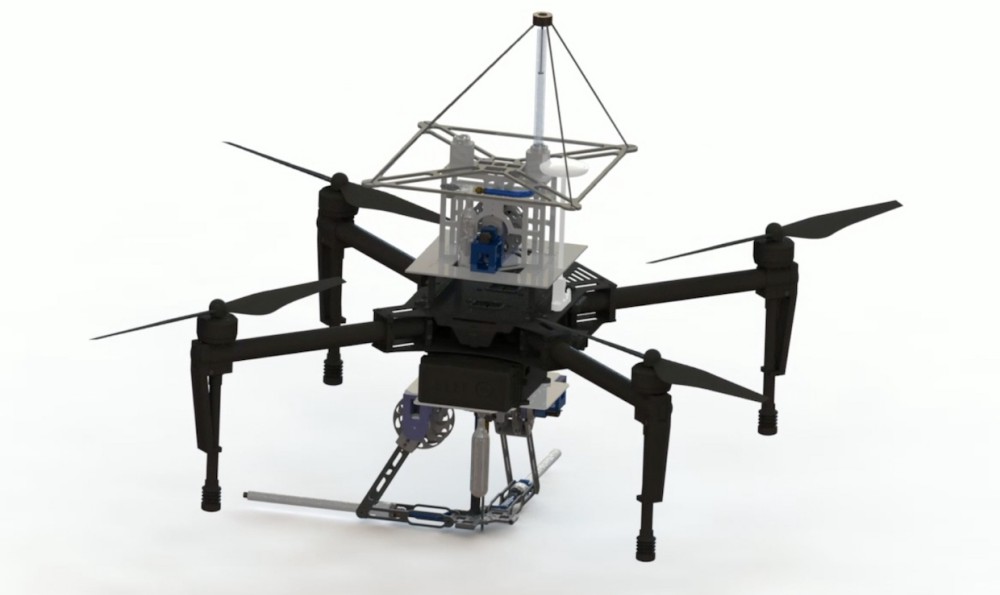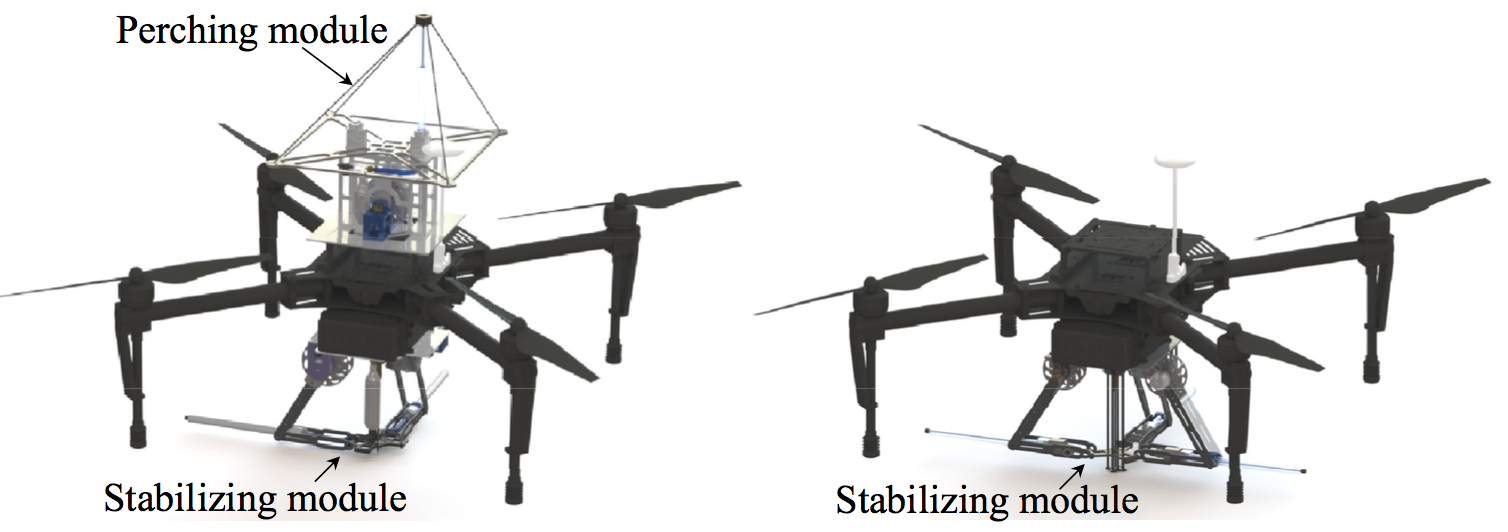At IROS last week, researchers from Imperial College London’s Aerial Robotics Laboratory, led by Mirko Kovac, presented SpiderMAV, a drone equipped with Spider-Man-style web shooters to help it create stable perches wherever it needs to.
SpiderMAV was inspired by a kind of orb-weaver spider known as Darwin’s bark spider, which can spin 25-meter long webs out of silk that’s twice as strong as the silk used by any other spider, and is in fact the toughest biological material in existence (listen to BBC’s Sir David Attenborough soothingly tell you all about the Darwin’s bark spider in this video).
SpiderMAV isn’t quite as well integrated as the spider; it’s essentially a DJI Matrice 100 drone with a customized perching module mounted on top and a stabilizing module at the bottom.
The perching module consists of a magnetic anchor launcher and an actuated spooling system using polystyrene thread. When SpiderMAV finds a magnetic surface (a metal ceiling or beam, ideally) that it wants to perch beneath, the launcher uses compressed gas to fire the anchor, which trails the thread behind it. With the anchor attached, SpiderMAV reels in the thread to keep it taut, and then can slow or shut off its motors, hanging securely from the ceiling.
The stabilizing module works the same way, except that the anchors and lines fire outwards instead of upwards, and the drone puts tension on the lines to lock itself in one spot in the air. Here’s another video showing how the two modules work:
Testing of the stabilization system showed a very significant improvement, especially when dealing with a (fan-generated) crosswind: “While attitude-hold mode control of the DJI M100 gave maximum deviation of 136, 386, and 106 mm in X, Y and Z direction respectively, test results showed that the stabilizing module improved stability of the MAV in all 3-dimensions with maximum deviation of 47, 80, and 75 mm in X, Y and Z respectively,” the researchers write in their IROS paper. The benefits of perching are even better, since the drone goes from using lots of power to essentially none at all, massively boosting its endurance.
Since this is just a very preliminary design test of the system, the researchers don’t really get into things like how to disengage the anchoring system, although the strength of the magnets can be adjusted, so perhaps they could be set up such that the SpiderMAV could yank them off with a full throttle burst. Or, use electromagnets or switchable magnets for anchors. For that matter, the anchoring system could likely be thought of as modular—if you’re flying inside buildings, magnetic anchors make sense, but microspines would be better for the outside of buildings, claws would be good for forests, and gecko adhesives are ideal for glass.
The researchers conclude by saying that SpiderMAV “opens up a new trend in the field of robotics on investigating string-driven systems with active moving platform,” so we expect that we’ll be seeing more research on this in the future.
“SpiderMAV: Perching and Stabilizing Micro Aerial Vehicles with Bio-inspired Tensile Anchoring Systems,” by K. Zhang, P. Chermprayong, T. M. Alhinai, R. Siddall, and M. Kovac from Imperial College London, was presented last week at IROS 2017 in Vancouver, Canada.
Source: IEEE Spectrum


